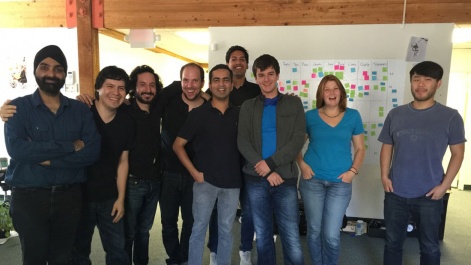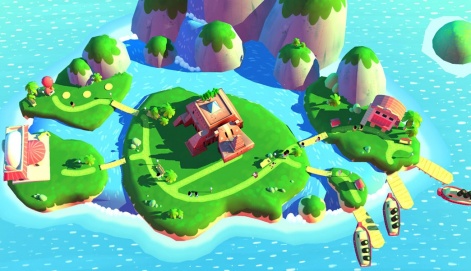As free-to-play becomes increasingly dominant, we've seen plenty of developers make the shift from premium to freemium.
Crescent Moon Games has released free-to-play versions of many of its previously premium titles, for example, and Get Set Games revamped Storm Casters as the F2P Storm Casters Ultra at the end of 2015.
But Bebopbee, the San Francisco-based indie studio behind Snapimals, is taking the unusual approach of shifting from free-to-play to premium.
Snapimals is a mixture of Pokemon Snap-esque animal photography and base-building that's received millions of organic installs and a keen community since its November 2015 launch.
But now Bebopbee is releasing Jurassic GO - Dinosaur Snap Adventure, a title heavily based on the photography gameplay of Snapimals, but with IAPs and wait timers removed in favour of a premium price tag.
With the game being recently launched, we reached out to Bebopbee CEO Rajeev Nagpal - former Head of Product at TinyCo - to discuss the motivations behind such a move.
PocketGamer.biz: The transition from premium to free-to-play is a relatively common one, but the reverse less so. What motivated you to take this decision?
Rajeev Nagpal: The decision to make Jurassic GO - Dinosaur Snap Adventure as a premium game happened following the overwhelming response from the community.
We received hundreds of emails requesting us to do a no-friction version of the game.Rajeev Nagpal
Our game is a spiritual successor to Pokemon Snap, which was a paid game on Nintendo 64, and we received hundreds of emails from our passionate fan base requesting us to do a no-friction version of the game that they would pay for gladly.
With Jurassic GO - Dinosaur Snap Adventure, the experience is much more in line with the N64 classic that inspired it.
Also, a huge thanks to the fans that have written us to say they we have done a better job than Nintendo did back then - which is very gratifying - we’re completely humbled by such kind feedback.
Outside of our committed core community, we pay a lot of attention to the feedback we see from all levels of players.
Across more than 60,000 reviews worldwide on the App Store and Google Play - the vast majority being five stars - we saw a similar feeling echoed about a desire for a version without friction.
When the media wrote about Snapimals, we heard it there too.
We still think there’s a great market for free-to-play, but with such resounding demand, it was clear that some gamers would have a better experience with a premium game.
You reported that you received millions of organic downloads worldwide with Snapimals, including plenty of positive feedback, and yet still you're seeking an alternative. Do you consider the F2P model to be inaccessible for smaller studios?
Running a F2P games-as-a-service studio is quite a challenge for most indies. You need to build a team with skills in user acquisition, analytics, community, monetisation, platform relationships, etc.
That’s not to say it can’t be done, but even with the right team, the F2P ecosystem has primarily become a UA ecosystem.

Having the capital to spend on UA is crucial, and the lack of such capital has become a serious roadblock for many smaller studios. There are companies like Peek Games or Playrix that are doing it successfully, though.
It’s hard to create a billion dollar games company through paid mobile releases.Rajeev Nagpal
On the other hand, it’s hard to create a billion dollar games company through paid mobile releases. We make games for the love of community, as well as to sustain ourselves.
This allows us the opportunity to create more great games of significance, taking a strategic pace as we try to reach that billion dollar company mark. We can’t quite talk about it yet, but we have another game coming later this year that we are very stoked about.
What are the main differences between Jurassic GO and Snapimals?
We kept the core mechanic of taking pictures the same, de-emphasised the builder aspects of play, and introduced a number of new elements.

We’ve added an optional social feature that lets players unlock legendary dinos, and we’ve introduced a new interactive object: a Harmonica that can lure Rare Dinos and solve various picture puzzles in the game.
We’ve also revamped Dino Island, as well as regions like Crater and Swamps - which look even more stunning now.
We treat Jurassic GO as a separate project aimed at a somewhat different audience.Rajeev Nagpal
There is also a lot of new content. The majority of dinosaurs have new skins, along with quirky new animations and new picture slots. It’s a much tighter, more delightful and fun experience.
Will you be continuing to operate Snapimals alongside the new paid release? If so, why? Do you consider it to be a kind of "try before you buy" opportunity for consumers?
Snapimals is a tremendously well-loved game with a much longer shelf life than Jurassic GO, and continues to be five-star rated in many countries (including China and most of Asia).
We are in the midst of exploring publishing and IP deals in Asia, and intend to keep Snapimals alive on both the App Store and Google Play for a long time.
We think it’s the best mobile game about animals, photography and conservation on mobile devices, so we’ll certainly keep operating on it. I also believe that the existing Snapimals community will enjoy Jurassic GO and vice-versa.
We treat Jurassic GO - Dinosaur Snap Adventure as a separate project aimed at a somewhat different audience.
We’re confident that there are significant number of players who would prefer a frictionless, non-IAP version of the Snapimals experience, and would find comfort in the psychological closure of having completed and mastered the game.
On the other hand, Snapimals' biggest spenders have been very enthusiastic about the game, and routinely write to us about adding more content and feeling good about supporting us.
There are two very distinct types of players that are drawn to Snapimals, and by continuing to maintain Snapimals alongside the release of Jurassic GO - Dinosaur Snap Adventure, we’ll be able to cater to both.
Considering the game's child-friendly content, did the ethical concerns of free-to-play for kids' games play a part in your decision to launch a premium version?
Parents like knowing that a game has a single purchase with no IAPs, and that did factor into on our decision-making.
We sincerely believe in building a community around trust.Rajeev Nagpal
We sincerely believe in building a community around trust. In the very few instances of inadvertent purchases that have been reported to us, we’ve been very generous in returning money.
That said, we haven’t seen much of that sort of issue overall.
What's the future for premium games on mobile?
I believe I’m not qualified to answer it yet. This is our first take on it - we’ll see where it might lead us.
Depending on the success of Jurassic GO, we may consider exploring additional platforms next.
Is the title Jurassic GO - Dinosaur Snap Adventures a nod to the world-conquering Pokemon GO, or is it just a happy coincidence?
Ha - it’s certainly harder now to say anything. We had the name Jurassic GO considered as an option long before Pokemon GO became a phenomenon.
We were looking at other titles with “GO” in them - Lara Craft GO, PBS Kids GO, etc. - to bring that sense of action and adventure.
Our game is inspired by Pokemon Snap, and I think Pokemon GO’s success may have ultimately factored in somewhat conscious and subconscious ways.
We were worried about being seen as opportunists, so I went around and asked my friends, family, and even the platforms. They all gave us a nod of approval, so I think we’re okay on that front.
Jurassic GO - Dinosaur Snap Adventure is now available on the App Store for $3.99.




















